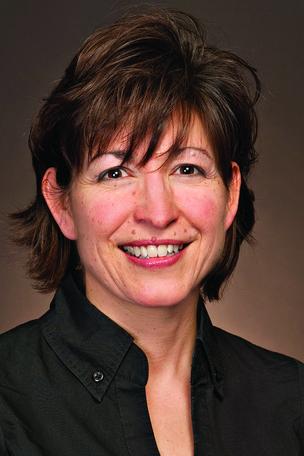
Hayley RingleReporter- Phoenix Business JournalEmail | Twitter | LinkedIn | Google+
Getting more women into STEM careers means getting more girls interested in those fields in elementary school, and keeping that interest stoked through high school, according to Mitzi Montoya, vice president and dean of Arizona State University’sEntrepreneurship and Innovation Group.
Universities then have to embrace the women in their science, technology, engineering and math programs so they will graduate and find jobs in the industry.
It’s a challenge, but it can be done, Montoya said. “We want young women to be comfortable to go into these careers,” she said Tuesday during a talk at the Girls in Tech conference happening in Phoenix. “We need to change the conversation on how we provide opportunities for women.”
- About 25 percent of all scientists and engineers are women.
- In 2013, women represented 18 percent of the graduating engineering class, up 1 percent from 2009.
- A Girl Scouts’ research study found that in middle school, 74 percent of girls express interest in STEM. However, Girls in Code found that only 0.3 percent of high school girls choose computer science as a major.
- Women represent 50 percent of the U.S. workforce yet own just over 30 percent of all businesses.
- Revenues from women-owned businesses represent only 4 percent of total business revenues in the U.S., roughly the same as 1997.
- Women founded only 1 to 3 percent of tech firms.
- In the startup world, only 13 percent of venture deals went to women-founded firms, which may be a result of conscious or unconscious bias.
- A recent study showed that video pitches in a male voice were 40 percent more likely to be funded than those in a female voice.
- Venture capitalists are more likely to invest in founders with whom they can easily interact and fraternize: More than 95 percent venture capitalists are men.
“These statistics should concern all of us,” said Montoya, the former vice provost of ASU’s Polytechnic campus and former dean of its College of Technology and Innovation.
Montoya said the key is creating experiences where students are working on degrees and hands-on projects to make the schooling more relevant.
Some women, and men, may also drop out early on because math is hard. Well, so is a hammer, Montoya joked.
“Men are just as scared, they just don’t express it the same way,” she said. “STEM matters because it’s a way of thinking.”
The Entrepreneurship and Innovation Group expanded last May with the hiring of Montoya and a new wider focus to include all students, faculty and the community.
Opportunities need to be created for young women to get interested in STEM, she said, since many self-select out for various reasons.
How can universities make classes less boring for more female students?
“It’s about inspiring students,” Montoyasaid. “We can’t say engineering is not for women. It’s just the stigmas associated with it. How do we change that? We need to think differently about what we do.”
She also suggested women help by being an advocate or mentor to young girls. More women also need to get involved on advisory boards to invest and create change in their community.
“We need to change the stats at the top and change what happens with girls between middle school and high school” (when they tend to lose interest), Montoya said. “Exposure matters. You have to be exposed to STEM.”



